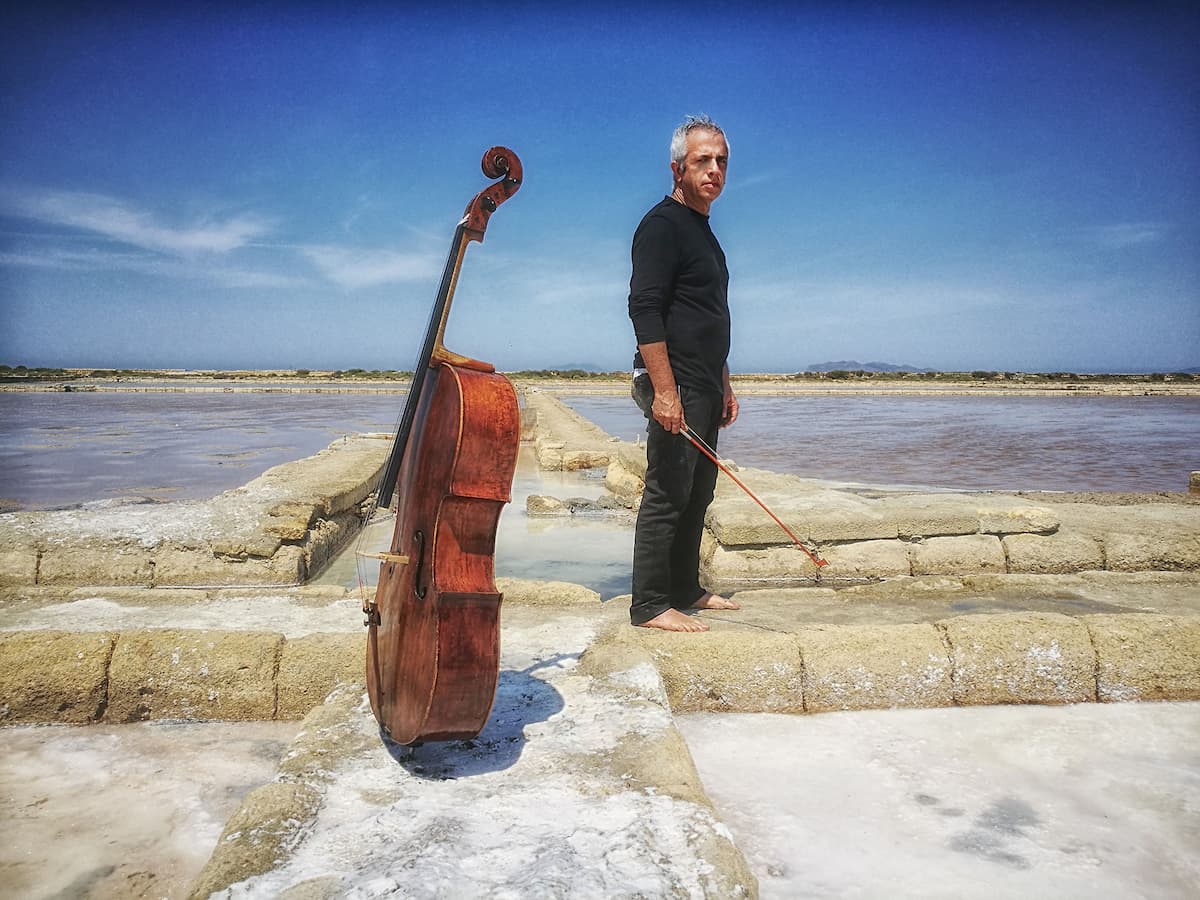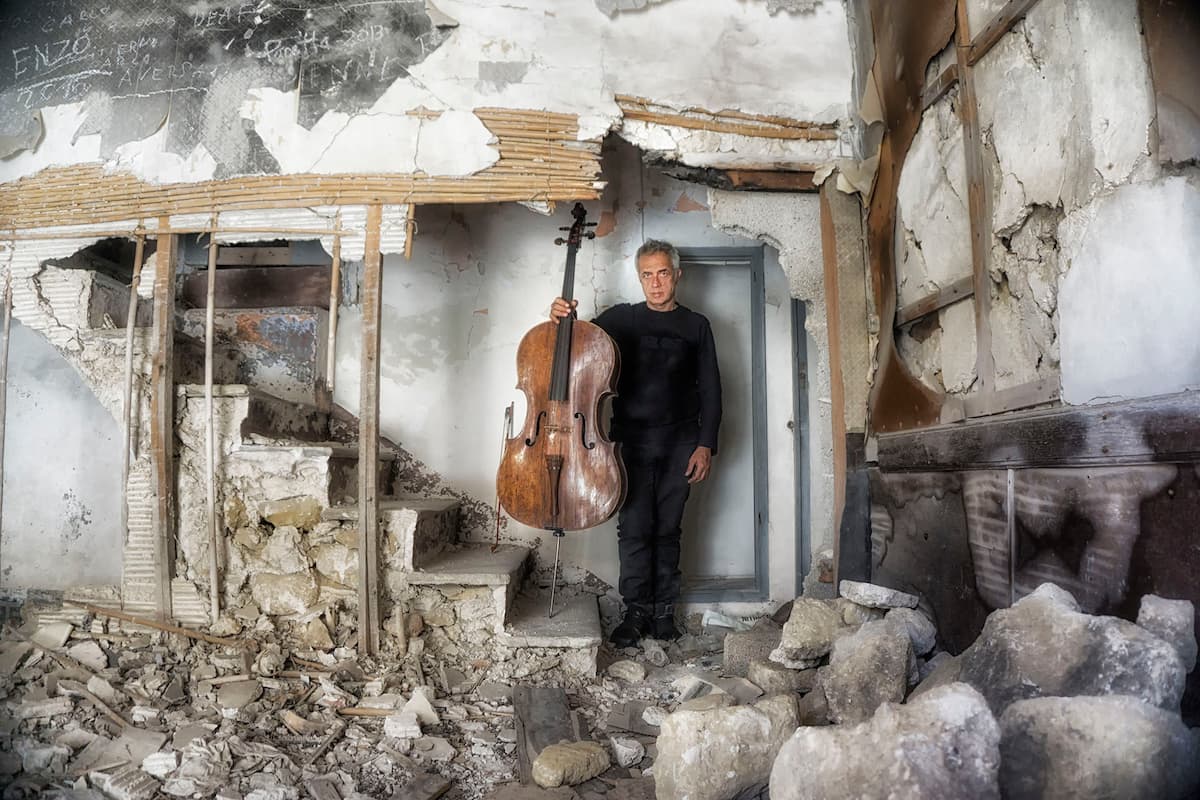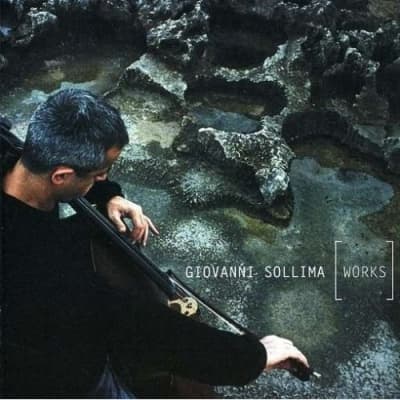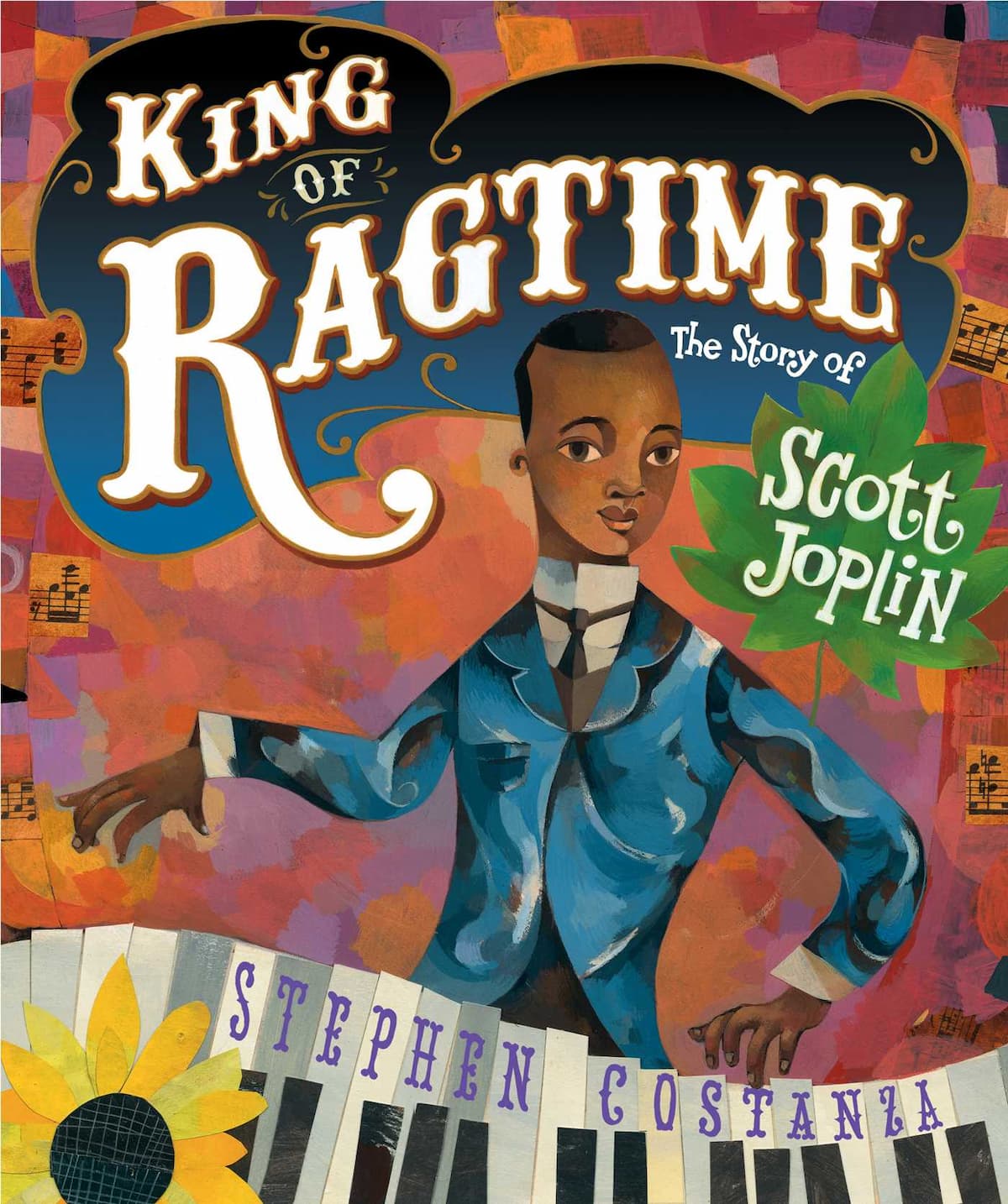The Internationally renowned cellist Giovanni Sollima flouts categorization. His mesmerizing personality and his genre-defying music sets him apart. A lean figure with salt and pepper hair, he appears on stage alone, dressed in black, and he beguiles us with his distinctive and virtuosic style of playing. Since I’m a cellist, I find his playing all the more spellbinding. Even Yo-Yo Ma has said, “He makes me look like a pussycat…He’s a super virtuoso of the cello. He studied with [the eminent] Antonio Janigro but plays like a jazz musician and is part performance artist. He has no fear, and that’s unusual in the classical world – we’re all terrified of wrong notes.” – Yo-Yo Ma, (Philadelphia Inquirer)

Giovanni Sollima © Shobha
In fact, the Chicago Symphony Orchestra commissioned him to write a double cello concerto, and he and Yo-Yo Ma played the premiere in February 2014 at Symphony Hall in Chicago.
Composer, virtuoso, professor, and conductor, he was born in 1962 in Palermo, Sicily, into a musical family. He studied cello with Giovanni Perriera and composition with his father Eiodoro Sollima. Further studies were with the great cellists Antonio Janigro and Milko Kelemen at the Musikhochschule Stuttgart and at the Universität Mozarteum Salzburg.
Sollima’s mesmerizing music incorporates influences from Jazz and rock traditions, his Mediterranean roots, minimalism, and modal techniques, and some unusually produced sounds. He’s not averse to experimentation and will use multiple tracks, percussive sounds, some even produced with a pencil, and otherworldly muted resonances using clothespins that pinch the bridge of the cello.
He performs everything from Baroque style masters such as Francesco Corbetta, with a Baroque bow and bowhold, to Thunderstruck; from Vivaldi on an Ice Cello, to his Onyricon multiple cello ensemble, all with a magnificent and effortless technique.
Sollima’s innovative approach is beautifully exemplified in the piece Daydream. With exquisite filming, the multiple cello lines are superimposed upon the lone cello figure onstage. The camera then pans through flights of fancy into nature scenes. In Part Two, Sollima dives into a driving rhythmic bowing, with dazzling and percussive left-hand pizzicato and rhythms that he achieves by slapping the left-hand strings. Listen for eerie harmonics and expect a surprise ending!
Giovanni Sollima: Daydream
Another unusual production was the ‘N-Ice Cello’ Tour of 2018—a project conceived by musician and music manager Corrado Bungaro in partnership with the luthier-sculptor Tim Linhart. Additional collaboration came from the Muse Museum, Trento. Giovanni Sollima performs his Gelido “in ogni vena” from Farnace by Antonio Vivaldi on a cello made of ice and the venue was atop a mountain.
Ice cello N-Ice concerto
Giovanni Sollima: Natural Songbook – No. 5 Hora (Enrico Bronzi, cello; Massimo Polidori, cello; Fabrizio Scilla, cello)
His arrangements, too, are ingenious—Stravinsky‘s Three Pieces for Clarinet, works of Bellini, Purcell, and contemporary composers. But he plays standards too, such as solo Bach recorded on a 5-string soprano viol with a baroque bow.
Sollima frequently writes works for multiple cellos. We can hear some of the pieces on the album Onyricron. The seven-movement work La Sostanza del Sogni, exquisitely shows our instrument’s wide gamut of expressive abilities. The movements move effortlessly from one style to another. The piece begins with the rhythmically nebulous and atmospheric Gianmaria’s Dream. A lone solo cello enters and plays a plaintive lamentation. Then, without pause, the cellists move to The Rainbow Cup. We are dazzled by very quick string crossings that push the tempo into the captivating Geology Dance Piece.
Giovanni Sollima: La sostanza dei sogni (Giovanni Sollima, cello; Ludovico Armellini, cello; Valerio Cassano, cello; Monika Leskovar, cello; Adriano Melucci, cello; Leila Shirvani, cello)

© Shobha
On the other hand, his Hunting Song for the Arianna Art Ensemble is written in the baroque style, and it is charming. The lilting Siciliana is written in the traditional rhythm of the dance, and while maintaining the wistful sounds, Sollima adds a more undulating background accompaniment. The Gigue is a spirited dance in a quick two but with a demonic drive. It’s modal and with some Mediterranean effects such as sitar-like glissandos and effects, which is not what one expects of a Baroque Gigue. Have a listen.
Giovanni Sollima: Hunting Sonata (Giovanni Sollima, cello; Monika Leskovar, cello; Gianluca Ubaldi, tamburello/timpani; Arianna Art Ensemble)
Collaboration is Sollima’s forte. He’s appeared with countless great performers, artists, and composers, from Gidon Kremer to Patti Smith and Philip Glass to the Bang on a Can All-Stars ensemble, as well as choreographers and filmmakers. For example, in 2000, he recorded two releases for the Agora label, Spasimo and Viaggio in Italia, (A Journey in Italy). These albums have a wide variety of instrumentation.
The major work on the album Spasimo is for solo cello and amplified ensemble— cello, viola, violin, synthesizer, and percussion. And Viaggio, performed by Sollima with the Lark Quartet, and later performed in Carnegie Hall, incorporates texts by Michelangelo Buonarroti, Giordano Bruno, and Francesco Borromini. Part of the Viaggio Suite, Casanova’s Sonata, is also scored for two flutes, two oboes, bass guitar, sampler, and string orchestra, and was reimagined as a ballet choreographed by Karole Armitage and staged at the Athens Festival. Such versatility and profound creativity! One can experience more on the album Works where you’ll hear Terra Aria, the music behind the Daydreams video, and a diverse array of compositions highlighting Sollima’s artistry.

Sollima has influenced entire generations of cellists through his teaching at the Academy of Santa Cecilia, and via his compositions. His Lamentatio, imaginatively performed here by the young cellist Kristina Reiko Cooper, with Federico Longo, dancer, and Alon Shafransky, videographer, has all of the characteristic effects Sollima employs in his music including left-hand pizzicato, col legno (producing a percussive effect by hitting the stick of the bow) glissando (left-hand slide on the string) double and triple chords, fancy fast passages and string crossings, and he even asks the cellist to sing along in a drone. This piece recently inspired composer Riccardo Pes to write his own composition Lament For the Tree.
Giovanni Sollima: Lamentatio
Although Sollima is considered an elder statesman now, he is still a cellist of the 21st Century, who defies labels and continues to stir audiences with his ingenious innovations. I know you will be thrilled to discover this artist if you haven’t before.
For more of the best in classical music, sign up for our E-Newsletter



